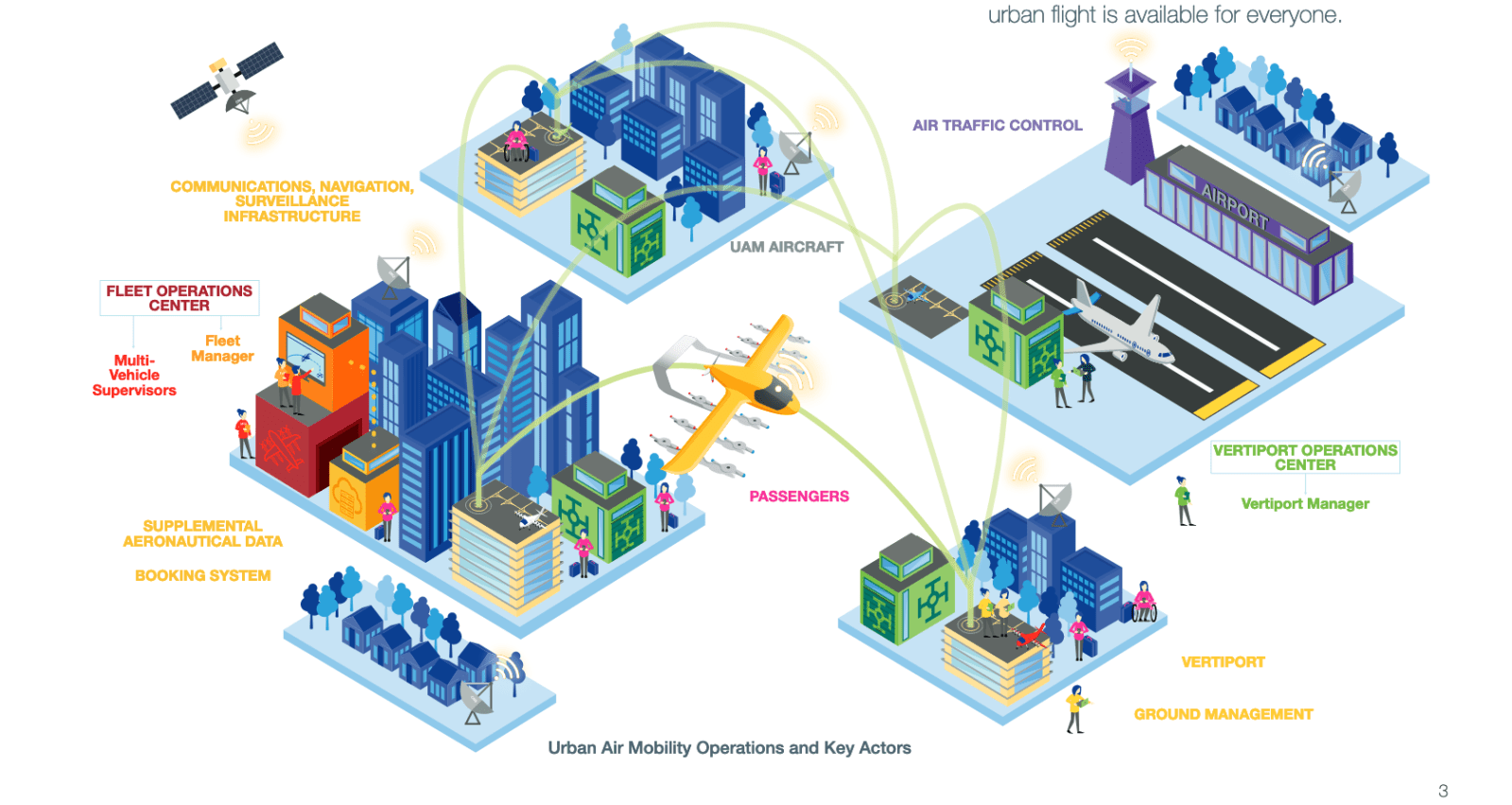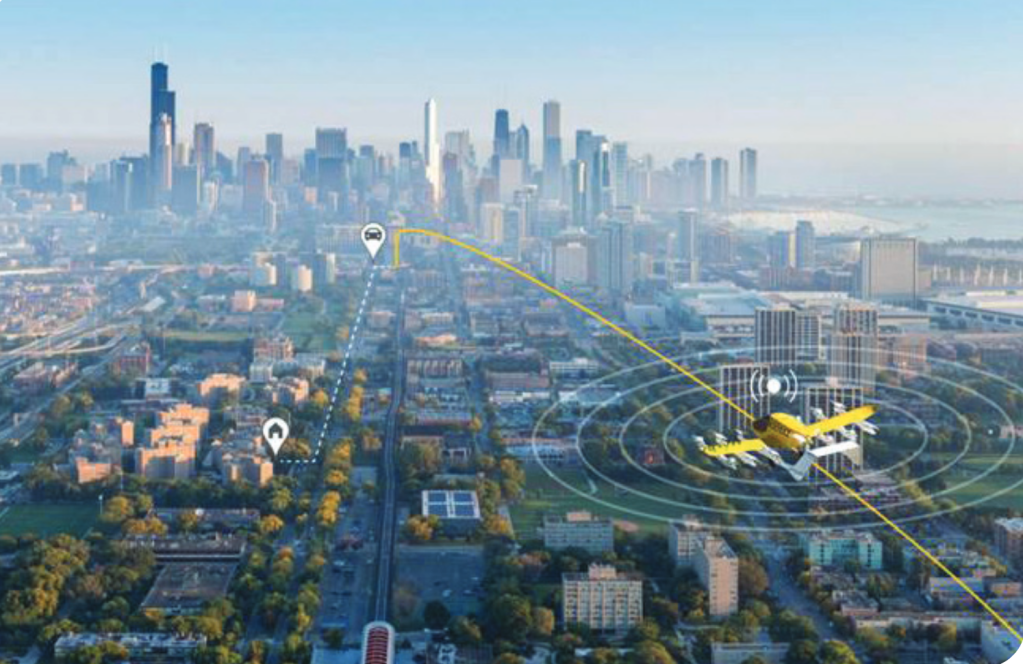
Aviation giant Boeing and its Wisk advanced air mobility partner have released a concept of operations overview for introducing urban air mobility (UAM) services like air taxis to the lower-level airspaces they’ll occupy.
The roadmap lays out a wide, often overlapping array of details for providing safe, affordable, and efficient UAM services flown by the kind of craft Wisk is developing with the financial backing of Boeing and Kitty Hawk. Though much of the content is a blend of good sense and commonly shared notions on how next-generation vehicles will fly passengers and goods around cities, it still offers a fairly granular vision of the technological, regulatory, and social requirements those operations may involve.
Among the pillars of the Boeing-Wisk proposal is that UAM services provide “safe, affordable, everyday flight for everyone,” using sustainable aircraft flown – as a general rule, and over time – autonomously. Though that latter aspect is intended to limit extra burden placed on already busy air traffic management (ATM) systems and personnel, the concept of operations notes looming urban aerial transport options will require additional human monitors to ensure the activity blends securely into the broader national airspace.
Read: Wisk gets $450 million for eVTOL air taxi certification push
To bring that about, it calls for the construction of new vertiports where passengers will be ushered into and out of air taxis, which will then fly established routes autonomously while being overseen by “a ‘human-over-the-loop’ supervisory station (serving) as the final authority for flight execution.” Those units will be part of a wider data network established to monitor individual craft, wider fleets of air taxi and delivery drones being operated, and online passenger check-in and vertiport ground management.
“We’re working to enable a future of aerospace that is safe, sustainable and at scale,” said Brian Yutko, vice president and chief engineer of sustainability and future mobility at Boeing, which last January upped its stake in UAM development with an additional $450 million infusion to Wisk. “Uncrewed operations will be fundamental to realizing that vision, and we have to exceed the current safety standards for the air transportation system.”

The Wisk-Boeing plan also details a sequential evolution of UAM operations and systems as services and technologies mature. Procedures applying to current and near-term activity are largely based on existing rules requiring onboard pilots to use visual and craft instruments for navigation while interacting with ATM controllers.
The mid-term phase, by contrast, marks the pivot to generally autonomous flight along fixed routes – somewhat like buses – while being monitored by backup ground supervisors. In a far-term future, virtually all aspects of UAM and drone deliveries would be automated, with takeoffs, aerial transport, and landings occurring according to fixed schedules.
Read more: Wisk partners with Long Beach to prepare air taxi, AAM services
Wisk CEO Gary Gysin said that the company’s work with Boeing preparing the UAM operational roadmap was backed up by close consultation with a variety of sector partners, including the Federal Aviation Agency and National Aeronautics and Space Administration.
“The important work we’re sharing today provides a stepping stone in the advancement of UAM in the US and the world,” Gysin said. The vison we have outlined is the result of many years of collaboration with Boeing, the FAA, NASA, and key industry stakeholders. As a result, this document offers the most comprehensive framework proposed to date with a vision for enabling UAM in the national airspace.”
FTC: We use income earning auto affiliate links. More.



Comments